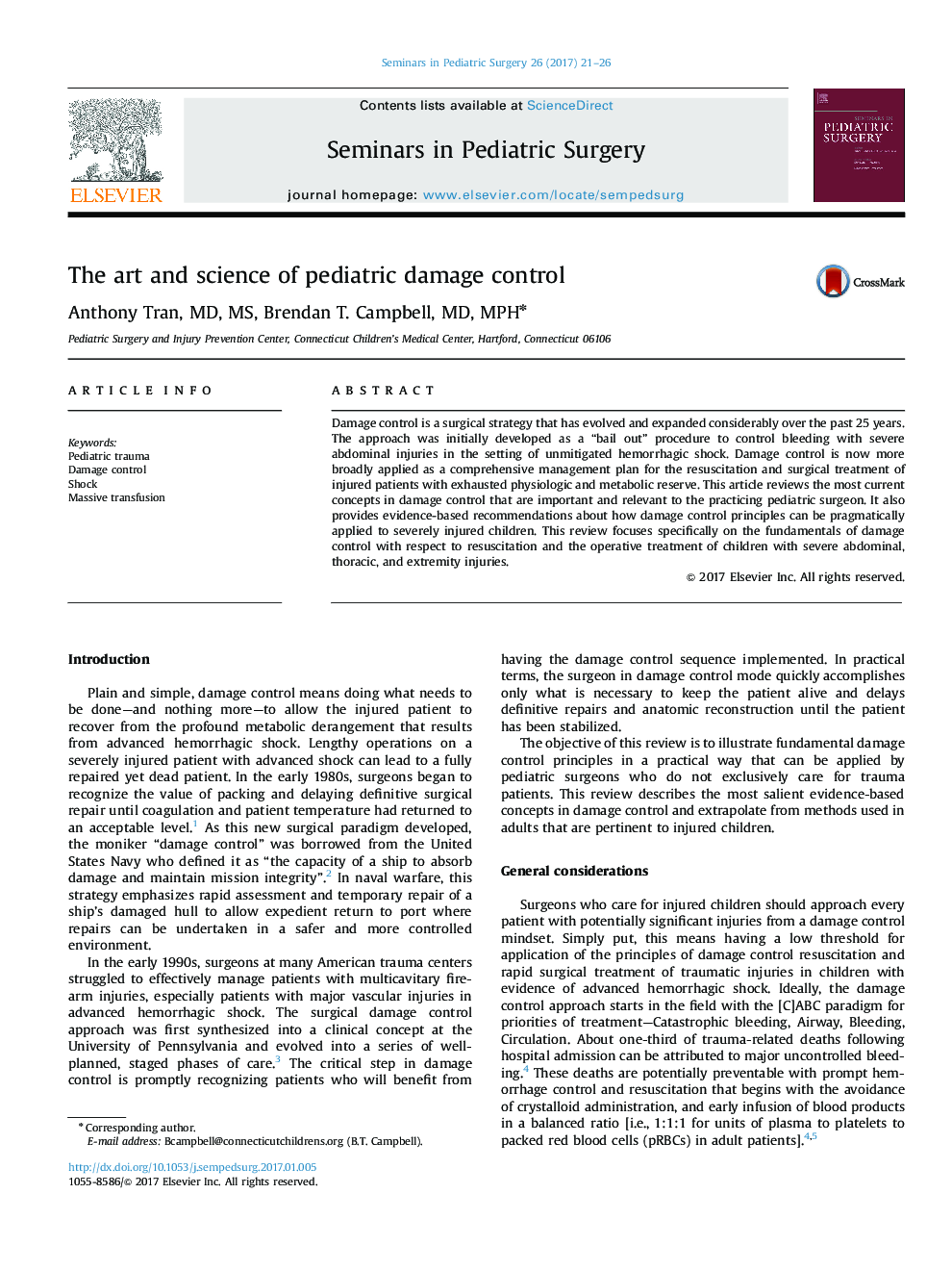| Article ID | Journal | Published Year | Pages | File Type |
|---|---|---|---|---|
| 5720300 | Seminars in Pediatric Surgery | 2017 | 6 Pages |
Damage control is a surgical strategy that has evolved and expanded considerably over the past 25 years. The approach was initially developed as a “bail out” procedure to control bleeding with severe abdominal injuries in the setting of unmitigated hemorrhagic shock. Damage control is now more broadly applied as a comprehensive management plan for the resuscitation and surgical treatment of injured patients with exhausted physiologic and metabolic reserve. This article reviews the most current concepts in damage control that are important and relevant to the practicing pediatric surgeon. It also provides evidence-based recommendations about how damage control principles can be pragmatically applied to severely injured children. This review focuses specifically on the fundamentals of damage control with respect to resuscitation and the operative treatment of children with severe abdominal, thoracic, and extremity injuries.
